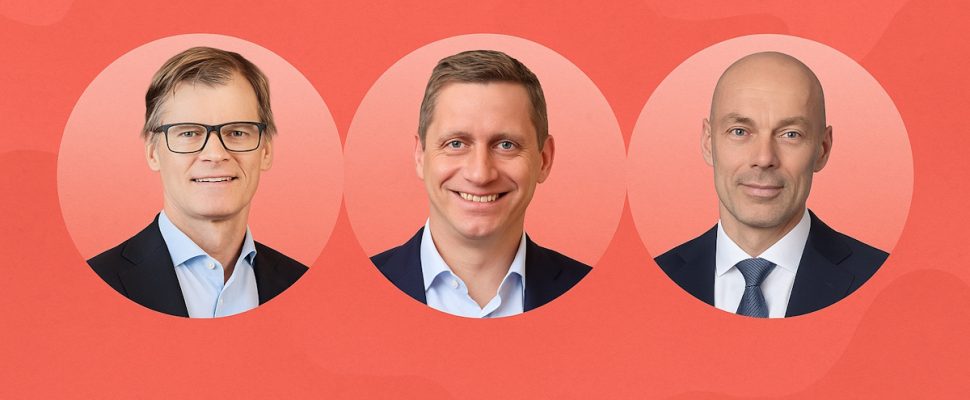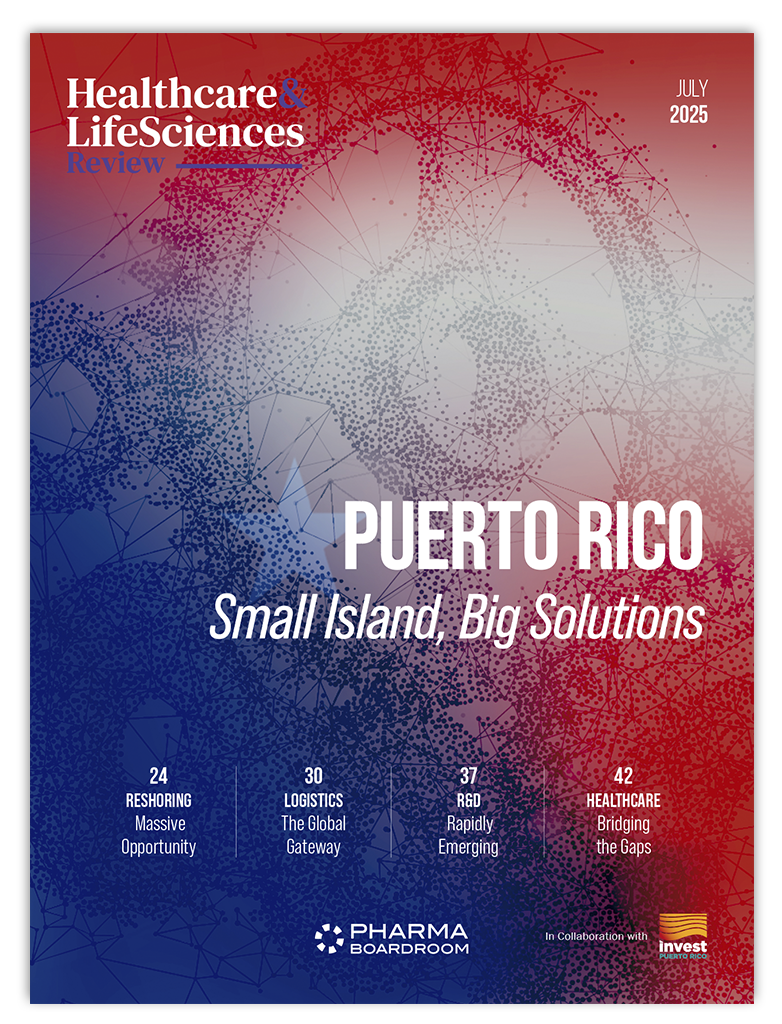While Big Pharma giants chase blockbuster drugs across multiple therapeutic areas, three Danish mid-cap companies are pursuing a different path to survival. Facing mounting pressures and global competition, ALK, LEO Pharma, and Lundbeck have turned to fresh leadership and bold transformation strategies. Drawing on exclusive interviews with the three CEOs piloting these firms, we look at how deep specialisation is creating competitive advantages and allowing these historic companies to live on.
The pressure on innovative European pharma firms, especially smaller ones, is real. European pharmaceutical R&D spending has lagged behind the US and China for over a decade, growing at just 4.4 percent annually compared to 5.5 percent in America and a staggering 20.7 percent in China, according to a PwC report for the European Federation of Pharmaceutical Industries and Associations (EFPIA). The US now outspends Europe by EUR 25 billion annually on drug development, up from just EUR two billion in 2002
In this context, LEO Pharma’s CEO Christophe Bourdon inherited a company with a devastating -17 percent EBITDA margin, while Lundbeck needed to sharpen its focus after years of drift. ALK, for its part, faced a period of negative earnings that demanded strategic reinvention. Rather than compete head-to-head with pharmaceutical behemoths, these companies doubled down on what they knew best: allergies, dermatology, and brain health.
Doubling Down on Niche Expertise
With nearly 300 years of combined history, these three firms have found their salvation in laser focus on their core therapeutic areas.
ALK works in allergy immunotherapy, aiming to retrain the immune system rather than just alleviate symptoms. “Rather than focusing on symptomatic relief, the company is committed to enabling long-term immune tolerance through allergy immunotherapy (AIT), a treatment approach that retrains the immune system by gradually introducing controlled exposure to allergens,” says ALK CEO and President Peter Halling.
Lundbeck has gone all-in on neuroscience. “As a pure-play neuroscience company, we bring decades of accumulated experience, a deeply aligned organisation, and a clear understanding of the field’s complexity,” asserts Charl van Zyl, president and CEO of Lundbeck.
LEO Pharma leverages over 100 years of dermatological expertise. “In dermatology, many conditions are rare or poorly understood, and still lack approved therapies. This complexity is precisely where LEO Pharma, with our singular focus and longstanding expertise, is uniquely positioned to lead,” claims CEO Christophe Bourdon.
Crisis-Driven Transformation
Despite their strong reputations in specialized fields, these European pharma mainstays have faced mounting challenges in recent years, sparking a critical need for reinvention.
The numbers tell a sobering story about mid-cap pharma survival. PMC research analysing over 400 small- and mid-cap pharmaceutical companies found that nearly 60 percent delivered poor performance, with median returns of -42 percent. Only one in four managed strong growth. For companies like LEO, ALK, and Lundbeck, transformation wasn’t optional, but existential.
After a period of negative earnings, ALK underwent substantial change under Halling, who has been at the helm for under two years. He launched the Allergy+ strategic framework which he says, “serves as the blueprint for the company’s next phase of growth.” ALK now channels investment into its core therapeutic areas while building a more globally scalable and efficient organization.
When van Zyl came onboard as CEO in 2023, he was tasked with sharpening Lundbeck’s focus. “We refined our strategy around the idea of being a focused innovator in neuroscience, beginning with a clear assessment of where we could lead, and equally, where we should not compete,” he asserts. The company aligned around three core domains: neuropsychiatry, specialty neurology, and rare neurological diseases.
LEO Pharma’s Bourdon, in place since 2022, also brought transformation to the dermatology specialist. “When I joined, LEO Pharma faced a pressing need for change,” he reflects. “Our EBITDA margin stood at an unsustainable position of -17 percent that left little room for reinvestment in growth or innovation. Decisive steps were necessary to reset our cost base and define a clearer strategic path.”
Change in a company with more than a century of history required a delicate approach. “I made a concerted effort to understand the organisation’s DNA, what had been working, what employees valued, and where the culture drew its strength,” explains Bourdon. “There is a deep sense of pride in belonging to LEO, and it was important to preserve that while being honest about the urgency of the situation. The objective was to build forward, not to dismantle, and to place the company on a more stable and future-oriented trajectory.”
Strategic Pipeline Expansion
Pipeline building has become a key strategic focus for all three CEOs. “By 2026 we expect to have four Phase III assets, an important shift toward a more mature, value-generating pipeline,” says van Zyl, adding that “building sustainability goes beyond internal R&D.”
Last year Lundbeck made a major acquisition, the largest in its history. With the purchase of US-based Longboard, it brought onboard its lead asset bexicaserin for the treatment of developmental and epileptic encephalopathies (DEEs). The company is also exploring untapped potential within its existing portfolio. “A strong example is a recent FDA approval gained by an existing therapy which was initially approved for two other indications and is now adding a third.”
At LEO, the choice of which pipeline areas to build was decisive. “Surrounded by significantly larger players, we had to be selective in how we allocated resources,” Bourdon claims. “We decided to focus on areas where we have unique capabilities, specifically topical formulations, and shifted to a ‘search, partner, and develop’ model.” This new approach led to a partnership with Gilead for a STAT6 programme for inflammatory diseases, one of the largest preclinical deals in the industry, with USD 250 million upfront, and potential total value exceeding USD 1.7 billion.
For ALK’s Halling, partnerships form an integral part of the company’s strategy, enabling it to more easily expand its portfolio. A recent example was the agreement made with San Diego-based ARS Pharmaceuticals for an intranasal epinephrine spray. “For ALK, this commercial partnership not only strengthens our offering in the anaphylaxis segment but also aligns well with our focus on allergy-related conditions and patient-centric solutions.”
ALK is actively engaged in early-stage research partnerships, like its collaboration with McMaster University in Canada, an institution that uses artificial intelligence to investigate the biological origins of allergic responses. “This is research that could eventually inform entirely new therapeutic directions,” Halling affirms.
Their focus on partnerships and licensing makes strategic sense in today’s market. European pharma M&A activity declined 33 percent in 2024, according to PwC research, with deal values shrinking as larger players increasingly target mid-caps for acquisition. Rather than become targets, these Danish companies chose to become partners.
Efficiency as a Growth Lever
Greater operational efficiency also underpins the Danish midcaps’ transformation. Under van Zyl, Lundbeck shifted its leadership culture, fostering an end-to-end innovation mindset. “It has been essential to better connect the dots between early discovery, development, and commercial planning, ensuring a shared sense of purpose and strategic continuity across the organisation.”
At ALK, optimization is a central pillar of the firm’s new strategy, “aimed at building a globally scalable and efficient organisation,” says Halling.
LEO addressed cost efficiency issues more radically, relocating some of its operations from Denmark to Poland and India and reducing its headcount from 6,000 to 4,000. The historically private company has an IPO planned for next year, a change that is also set to drive productivity. In Bourdon’s view “being publicly listed brings a level of operational and communicative discipline that strengthens an organisation. The IPO is not a pivot away from long-term thinking, but rather a continuation of our journey towards greater accountability, transparency, and professionalism.”
Going Global
As European-based companies, the region has held historic importance for all three. “Europe remains ALK’s core market, currently representing around 70 percent of the company’s global business,” says the company CEO. Yet in their current transformative mode, and with the European market in a period of stagnation, these Danish midcaps are looking further afield, namely to the US.
“Despite the complexities of the US market, we see substantial potential for growth there, as well as across Asia-Pacific. ALK currently derives approximately 15 percent of its business from North America and another 15 percent from Asia,” says Halling. “While these shares remain modest compared to Europe, they are growing steadily. Expansion into these markets is an active strategic focus, with investments underway in the US, Canada, China, Japan, and beyond. These are regions we viewed as critical to ALK’s long-term global ambition.”
Lundbeck is also redefining its global footprint. “The US remains a core market where we have made substantial investments,” van Zyl confirms. “We are now intensifying our presence in China and Japan, and adopting a more targeted, performance-oriented approach in Europe.”
LEO too is growing its foreign presence. “One of the most significant developments in recent years has been the rise of the US from a secondary market to our largest affiliate. China now follows as our second largest, and together they represent the foundation of a balanced global presence.”
Danish Advantage
The CEOs recognize that Denmark, with initiatives like its 2030 life sciences strategy, has unique strengths. “Denmark stands out within Europe for its clear recognition of life sciences as a strategic industry, an approach that has translated into meaningful policy support,” van Zyl says.
“The government has made a concerted effort to develop a framework that supports a broad spectrum of industry players, and that is something we welcome,” Halling agrees while highlighting that Denmark still needs to evolve its “regulatory complexity, the ability to retain and attract investment across all company sizes, and the need for greater mobility and availability of talent.”
Within this supportive ecosystem, the three companies have leveraged their long-standing strengths and performed successful transformations that are yielding results. “Our performance over the past five to six quarters has demonstrated consistent delivery and tangible progress, with results regularly exceeding analyst forecasts,” Lundbeck’s CEO affirms. Meanwhile, LEO pharma is moving towards an EBITDA margin of 15 to 18 percent and ALK has returned to sustained profitability and forecasts a 25 percent EBIT margin and top-line growth of 9 to 13 percent.



